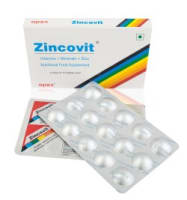USED FOR:
Bacterial infections
Allergic disorders
COMPOSITION:
Chloramphenicol (10mg)
Dexamethasone (1mg)
Polymyxin B (10000IU)
Therapeutic Uses:
otologicals
hormones
ophthal otologicals

No interaction found

WEIGH RISKS VS BENEFITS
Ocupol D Eye Ointment may be unsafe to use during pregnancy.Animal studies have shown adverse effects on the foetus, however, there are limited human studies. The benefits from use in pregnant women may be acceptable despite the risk. Please consult your doctor.

CAUTION
Ocupol D Eye Ointment is probably unsafe to use during lactation. Limited human data suggest that the drug could represent a significant risk to the baby.

Do not drive unless you are feeling well.Ocupol D Eye Ointment may cause dizziness (vertigo). Changes in your eyesight or muscle weakness may also happen. This may affect your driving ability.

Ocupol D Eye Ointment is probably safe to use in patients with kidney disease. Limited data available suggests that dose adjustment of Ocupol D Eye Ointment may not be needed in these patients. Please consult your doctor.Regular monitoring of kidney function tests and other blood tests is advisable while you are taking Ocupol D Eye Ointment.

CAUTION
Ocupol D Eye Ointment should be used with caution in patients with liver disease. Dose adjustment of Ocupol D Eye Ointment may be needed. Please consult your doctor.
Uses of Chloramphenicol
Chloramphenicol is used in the treatment of bacterial infectionsIt is used to treat certain types of serious infections caused by bacteria when other antibiotics cannot be used.
How to use Chloramphenicol
This medicine is for external use only. Take it in the dose and duration as advised by your doctor. Check the label for directions before use. Hold the tube close to the eye/ear without touching it. Gently squeeze the tube and place the medicine inside the lower eyelid or ear. Wipe off extra liquid.
How Ocupol D Eye Ointment works
Chloramphenicol is an antibiotic. It stops bacterial growth by inhibiting synthesis of essential proteins, required by bacteria to carry out vital functions.
Common Nausea, Vomiting, Diarrhoea, Altered taste.
Expert advice for Chloramphenicol
Always take the complete course of treatment, as advised by your doctor even if you feel better. Antibiotics will not work for colds, flu, or other viral infections. Never take an antibiotic for a viral infection like a cold or the flu.
Q. Is chloramphenicol bacteriostatic or bactericidal/ an antibiotic/does it contains penicillin/ does it contain steroids/ treat styes?
Chloramphenicol is an antibiotic and exerts both bactericidal and bacteriostatic against wide variety of gram positive and gram negative bacteria including E.coli. No, it does not contain penicillin or steroids
Q. Is chloramphenicol safe/ do chloramphenicol cause aplastic anemia/ safe for babies?
Chloramphenicol is safe at recommended dose and duration; however, in some cases it has led to rare side effects such as aplastic anemia. Chloramphenicol should not be used in children under 2 years of age and used be with extreme caution in children above 2 years of age especially who have diarrhea or a stomach or bowel infection
Q. Does chloramphenicol sting/ does chloramphenicol cause dry eyes?
Chloramphenicol eye drops/ ointment may cause transient burning or stinging sensation. It does not cause but should be used with extreme precaution in patients with dry eye syndrome
Q. Can i take paracetamol with chloramphenicol?
Chloramphenicol is not known to have any drug interactions with paracetamol, however, it should be taken together as per doctor's advice
Q. Is chloromycetin a penicillin/ an antibiotic/ with the formula/ chloromycetin is a drug for which disease?
Chloramphenicol is a brand name for chloramphenicol. It is not penicillin. It is an antibiotic with the formula C11H12Cl2N2O5. It used in the treatment of serious infections in different parts of the body caused by bacteria by killing or preventing their growth
Q. Is chloromycetin over the counter/ is obtained from?
No, it is available only with your doctor's prescription
Q. Is chloramphenicol and tetracycline similar?
Chloramphenicol and tetracycline belongs to same category of drugs with similar action, but their effect may vary upon individual response
Q. Is Chloromycetin the same as chlorsig?
Both Chloromycetin and chlorsig contains chloramphenicol. Chlorsig is available as eye drop or ointment and Chloromycetin is an oral formulation.
Uses of Dexamethasone
Dexamethasone is used in the treatment of allergic disorders, severe allergic reaction, asthma, cancer, rheumatic disorder, skin disorders, eye disorders and nephrotic syndrome.
How to use Dexamethasone
This medicine is for external use only. Take it in the dose and duration as advised by your doctor. Check the label for directions before use. Hold the tube close to the eye/ear without touching it. Gently squeeze the tube and place the medicine inside the lower eyelid or ear. Wipe off extra liquid.
How Ocupol D Eye Ointment works
Dexamethasone belongs to a group of medicines called corticosteroids. It prevents late phase allergic reactions by preventing release of chemicals responsible for allergy..
Common Electrolyte imbalance, Redistribution/accumulation of body fat, Bone degradation, Increased risk of infection, Muscle disorders, Increased blood pressure, Altered bone growth, Skin scar, Behavioural changes, Increased glucose level in blood, Cataract.
Expert advice for Dexamethasone
Do not use dexamethasone, if you are allergic to it in case of eye drops, do not touch the tip of dispenser to an eye or eyelid.
Do not use dexamethasone eye drops if you have glaucoma or diabetes.
Do not stop using dexamethasone suddenly, or you could have unpleasant withdrawal symptoms.
Talk to your doctor about how to avoid withdrawal symptoms when stopping the medication.
Do not use dexamethasone oral solution:you have a fungal infection that affects entire body if you have a stomach or duodenal ulcer.
Consult your doctor before taking dexamethasone oral solution, if you have kidney or liver problems or if you have high blood pressure, heart disease or you have recently had a heart attack.
Uses of Polymyxin B
Polymyxin B is used in the treatment of bacterial infections.
How to use Polymyxin B
This medicine is for external use only. Take it in the dose and duration as advised by your doctor. Check the label for directions before use. Hold the tube close to the eye/ear without touching it. Gently squeeze the tube and place the medicine inside the lower eyelid or ear. Wipe off extra liquid.
How Ocupol D Eye Ointment works
Polymyxin B is an antibiotic. It works by killing the bacteria that cause infections.
Common Nephrotoxicity, Neurotoxicity, Anaphylactic reaction, Shortness of breath, Exanthema, Fever, Increased white blood cell count (eosinophils), Tachycardia, Urticaria.
Expert advice for Polymyxin B
The injectable form of this drug is given only to hospitalized patients and under medical supervision.
You may get diarrhea after taking the injection. This usually settles as the course id completed. Consult your doctor if the diarrhea persists or worsens.
Consult your doctor if you get watery or bloody stools after completing the course.
Do not take polymyxin B if you are allergic to polymyxin B or any of the other ingredients of the drops or ointment.
Do baseline kidney function test before starting the medicine.
Consult your doctor before taking polymyxin B eye ointment/ drops: If you are taking herbal drugs or eye drops. If you are applying any non-steroidal anti-inflammatory drugs (NSAIDs) or steroids. If you wear contact lenses. If you have thinning of the eye tissue. If you have diabetes.
Women who are pregnant or breast feeding should consult the doctor on taking this medication.
Eye pressure should be regularly checked in patients taking the eye ointment /drops especially in children.
Do not drive or use machines immediately after using the drops/ointment as it may cause blurred vision.
If you wear contact lenses, then remove them before applying the drops/ointment and wear them only after 15 min.
Q. Is polymyxin B an antibiotic/sulpha drug/penicillin?
Polymyxin B belongs to a class of medication called antibiotics. It is not a sulpha drug/penicillin
Q. Is Polymyxin B bacteriostatic or bacteriocidal?
Polymyxin B is bactericidal i.e. it kills bacteria
Q. Does Polymyxin B expire?
Polymyxin B does expire and should not be used beyond the expiry date
Q. Does Polymyxin B treat pink eye or conjunctivitis?
Polymyxin B is not used to treat pink eye or conjunctivitis
Q. Does it treat sties?
It is not used for the treatment of sties in the eyes
Q. Is Polymyxin B safe for infants?
It is not considered to be safe for infants.
Ajanta Pharma Ltd
₹15.8/gm of Eye Ointment Out of stock


 Ocupol D Eye Ointment
Ocupol D Eye Ointment  Bookmark
Bookmark





















